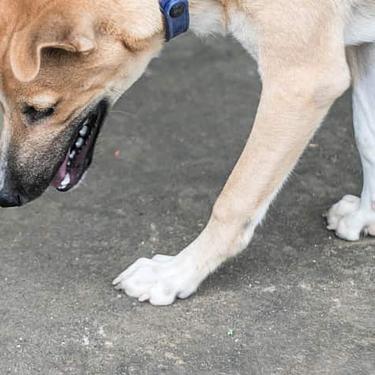
-
Find the right food for your petTake this quiz to see which food may be the best for your furry friend.Find the right food for your petTake this quiz to see which food may be the best for your furry friend.Featured products
 Adult Small & Mini Lamb Meal & Brown Rice Recipe Dog Food
Adult Small & Mini Lamb Meal & Brown Rice Recipe Dog FoodFor the faster metabolism of Small & Mini dogs
Shop Now Adult 7+ Small & Mini Chicken & Brown Rice Recipe Dog Food
Adult 7+ Small & Mini Chicken & Brown Rice Recipe Dog FoodFor the unique nutritional needs of mature Small & Mini dogs
Shop Now Hill's Science Diet Adult Oral Care Chicken, Brown Rice & Barley Recipe Dog Food
Hill's Science Diet Adult Oral Care Chicken, Brown Rice & Barley Recipe Dog FoodClinically proven kibble technology to reduce plaque & tartar build-up
Shop NowFeatured products Hill's Science Diet Adult Sensitive Stomach & Skin Dog Food
Hill's Science Diet Adult Sensitive Stomach & Skin Dog FoodHighly digestible recipe, gentle on stomachs. Nourishes skin & promotes a lustrous coat
Shop Now Adult Urinary Hairball Control Chicken & Rice Recipe Cat Food
Adult Urinary Hairball Control Chicken & Rice Recipe Cat FoodActively supports the health of the whole urinary system
Shop Now Adult Indoor Chicken Recipe Cat Food
Adult Indoor Chicken Recipe Cat FoodSupports energy level and beautiful fur in indoor cats
Shop Now -
Featured articles
 My Pet Ate a Lizard — What Should I Do?
My Pet Ate a Lizard — What Should I Do?Learn what to do if your pet eats a lizard, including whether they can be toxic and symptoms to keep an eye on when they've swallowed one.
Read More 15 Pet-Friendly Cities Ideal for a US Road Trip
15 Pet-Friendly Cities Ideal for a US Road TripCheck out our list of pet-friendly U.S. cities that are excellent travel options, offering off-leash dog parks and pet-friendly restaurants & hotels.
Read More Easy DIY Dog & Cat Toys: Nine of Our Favorites
Easy DIY Dog & Cat Toys: Nine of Our FavoritesBrowse this comprehensive guide for several of our favorite DIY dog and cat toys that are sure to put a little pep in your pet's step.
Read More -


The ear is divided into four parts:
- Pinna - the part outside the head
- External ear canal
- Middle ear - found on the inside of the eardrum
- Inner ear - consists of tubes and nerve structures that transmit sound to the brain. The inner ear also helps control your dog’s balance.
Ear inflammations are common in dogs and have many causes. Dogs, like bloodhounds, with droopy ears and/or a great deal of hair, like the English sheepdog, in the ear canal seem to have the most problems with ear inflammations. These characteristics plus the warm and enclosed nature of the ear canal provide an excellent environment for infectious agents that cause inflammation.
Causes
Bacteria, fungi and ear mites are common causes of ear inflammation in dogs. Allergies, seborrhea, an underactive thyroid gland, trauma, foreign objects (such as plant seeds) and tumors also cause ear inflammation.
Most cases of middle ear and inner ear inflammation are caused by bacteria that pass through a ruptured eardrum. One cause of a ruptured eardrum is overzealous cleaning of the ear canal. Throat infections may also cause middle ear inflammations.


Tasty Tips
Diagnosis by your Veterinarian
Examination of your dog’s ear canal and eardrum by your veterinarian with an instrument called an otoscope helps determine the cause. If the ear is very painful, your dog may need to be sedated for a thorough exam. Other tests include: microscopic examination of earwax; ear cultures; thyroid hormone studies; X-rays; surgical biopsy.
Most ear inflammations can be treated successfully once appropriate diagnostic tests are completed by your veterinarian.
Treatment and Home Care
Ear issues must be treated persistently and specifically, depending on the diagnosis. In some cases, treatment may need to be continued for six weeks or longer.
In most cases your veterinarian will need to clean your dog's ear and remove the hair from the ear canal before treatment will be effective. The use of medications to dry your dog’s ears can be helpful. More aggressive treatment, such as surgery, may be recommended for severe cases.
Home care usually includes administering medications directly into your dog’s ear canal according to your veterinarian’s instructions. Failure to properly administer ear preparations could lead to chronic inflammation, so be sure to follow your veterinarian’s recommendations.
Nutrition
If your dog has an ear issue, your veterinarian may suggest a change in your dog’s food. In some cases, your veterinarian may recommend a therapeutic hypoallergenic dog food to help limit exposure to potential allergens. Such dog foods may include Hill’s® Prescription Diet® brand dog foods.
Unless recommended otherwise by your veterinarian, gradually introduce any new dog food over a seven-day period. Learn how to transition your dog gradually to a new dog food.


One of our staff authors prepared this article for you
Related products

For the faster metabolism of Small & Mini dogs

For the unique nutritional needs of mature Small & Mini dogs

Improves everyday ability to get up & go

Clinically proven kibble technology to reduce plaque & tartar build-up
Related articles

Understand the role that Omega-6 and Omega-3 fatty acids play in your dog's overall health, and how you can ensure they are getting enough.

Your dog's coat and skin are a big part of your dog's overall health. Ensure you keep your dog's coat healthy, by following these simple tips.

Discover how the field of dog science is giving us more and more insights into the inner workings of our furry best friends.

Learn basic steps & precautions for treating a cut on your dog, including what you can put on the cut, and when you should take them to the vet.

Put your dog on a diet without them knowing
Our low calorie formula helps you control your dog's weight. It's packed with high-quality protein for building lean muscles, and made with purposeful ingredients for a flavorful, nutritious meal. Clinically proven antioxidants, Vitamin C+E, help promote a healthy immune system.
Put your dog on a diet without them knowing
Our low calorie formula helps you control your dog's weight. It's packed with high-quality protein for building lean muscles, and made with purposeful ingredients for a flavorful, nutritious meal. Clinically proven antioxidants, Vitamin C+E, help promote a healthy immune system.

